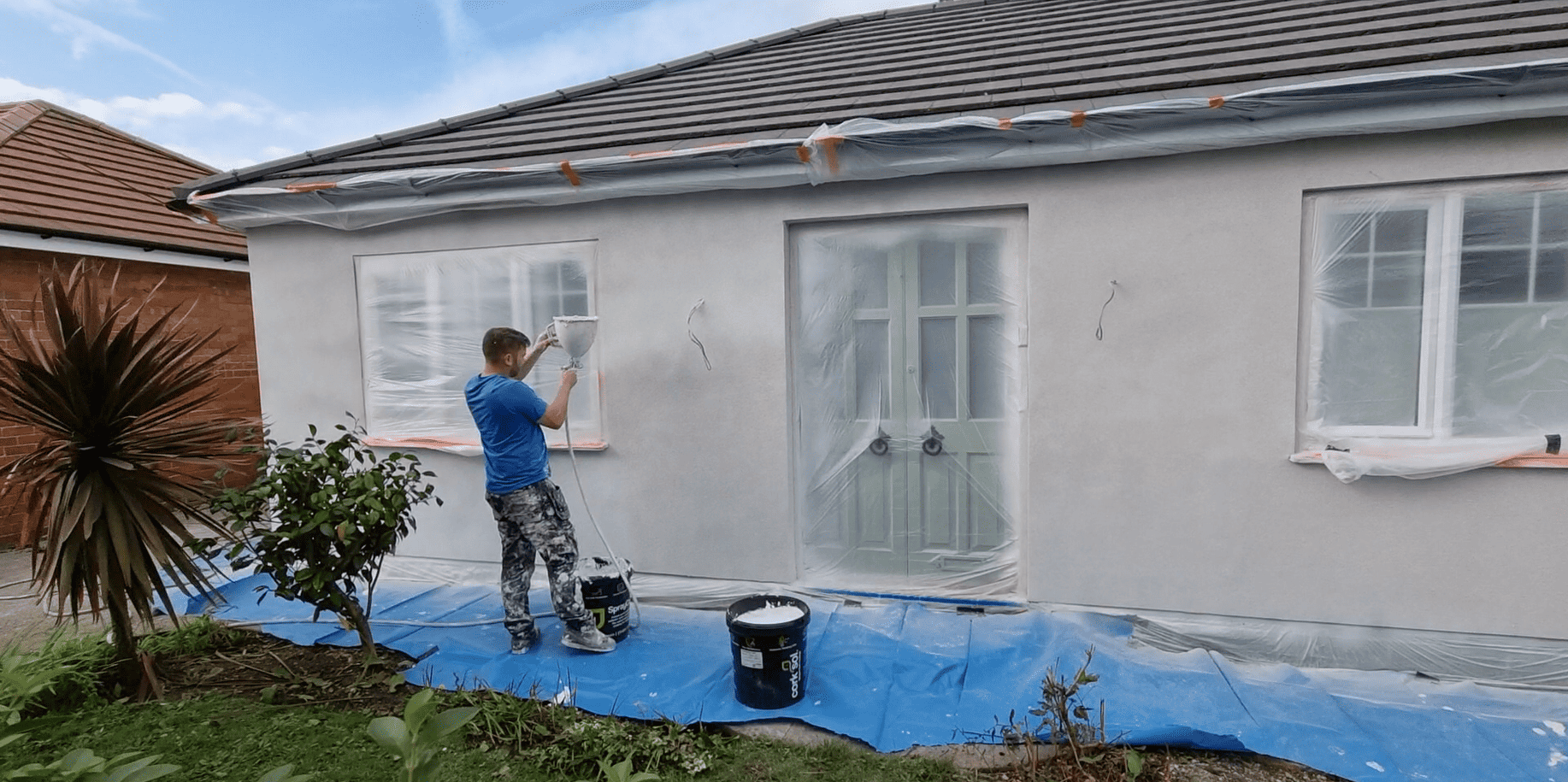1. Initial Consultation
An Independent Applicator will assess your property, often requiring a site survey. They'll evaluate your building's surface, size, and condition to determine suitability and provide a customized quote. If needed, you can send photos for an initial assessment.
2. Surface Preparation
The applicator will prepare the surface to ensure a clean, dry, and solid base for application. For external walls, this might include power washing or treating surfaces, especially in coastal areas to remove salt or algae.
3. Masking Up and Preparation
• For internal applications, the best practice is to remove as much furniture as possible from the room. Not only does this protect the furniture, but it also allows the applicator to move around the room without obstacles. Any furniture that cannot be moved out of the room will be protected by the applicator. Radiators should be removed from the walls to allow for the best coverage of the cork, and optimal performance – you will need to speak to your applicator to determine who will be responsible for this.
• For external applications, the applicator will arrange for scaffolding to be erected, where required, prior to the start date. They will then use protective materials to avoid any overspray, along with tape and plastic sheets to protect windows and doors. You should discuss with them about pipe work. We also recommend using sheeting underneath the scaffold to protect the ground from cork particles. All vehicles should also be removed to a safe distance away to avoid cork being sprayed on them – this applies to neighbours’ vehicles too.
4. Application Process
• Internal Application: CorkSol SprayCork is applied in two thin coats (2–3mm each) for thermal insulation and moisture control. This can be finished with a 2mm plaster skim if desired. Whilst it is not necessary, sockets and light fittings might be unscrewed to allow SprayCork to be sprayed behind them.
• External Application: CorkSol SprayCork acts as a protective render, which is sprayed directly onto the surface. It is possible to remove some pipes, although they are often simply taped up. Alternatively, these can be sprayed to match the façade. This method enhances durability and weather resistance.
5. Clean Up and Drying
Once the first layer of CorkSol SprayCork has been applied, the time to cure and be ready for the next coat is dependent upon a number of factors, including the overall temperature, air humidity, and air flow. This applies to both internal and external applications, and the Independent Applicator will share drying times and next stages during the project. Once the final coat is applied and has dried, the Independent Applicator will remove all protective material to leave the property in a clean and tidy state. If scaffolding has been used, the applicator will arrange for this to be removed.
6. Post-Application Maintenance
CorkSol SprayCork is durable and requires minimal upkeep. It can be jet-washed carefully on a low pressure setting to maintain cleanliness, though regular maintenance is generally not needed.
7. Customer Support
On confirmation of completion of the application and all payments being made, the Independent Applicator should contact CorkSol to request the 25-year product warranty. If the applicator is an Accredited or Master Applicator on the QualiCork Scheme you should request the workmanship warranties directly from them, as these are issued by the Applicators and are not anything to do with CorkSol UK.

